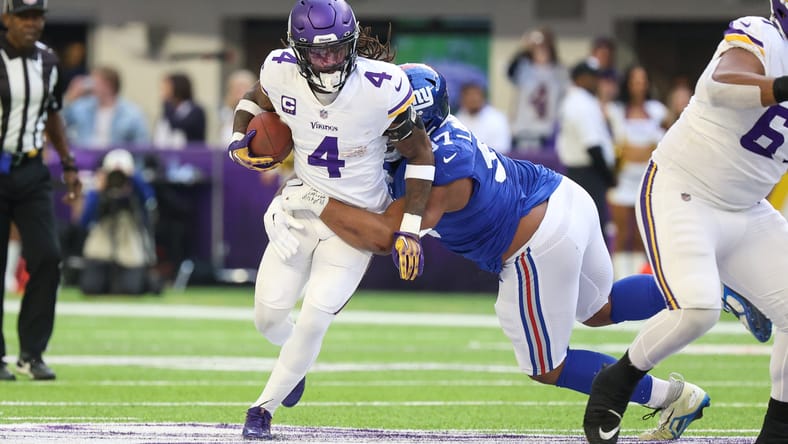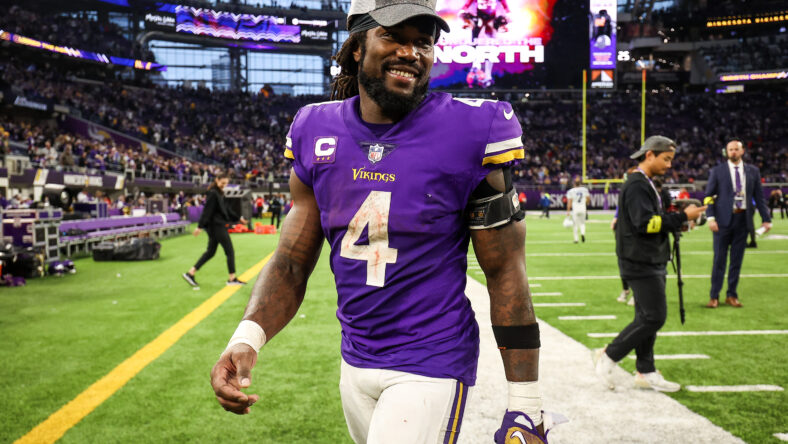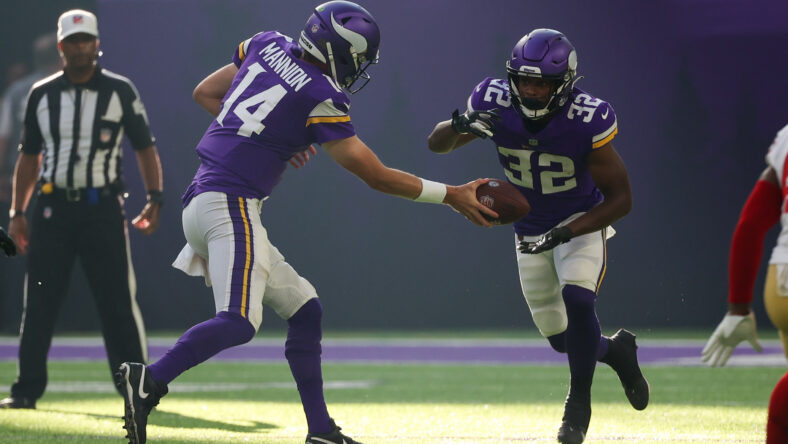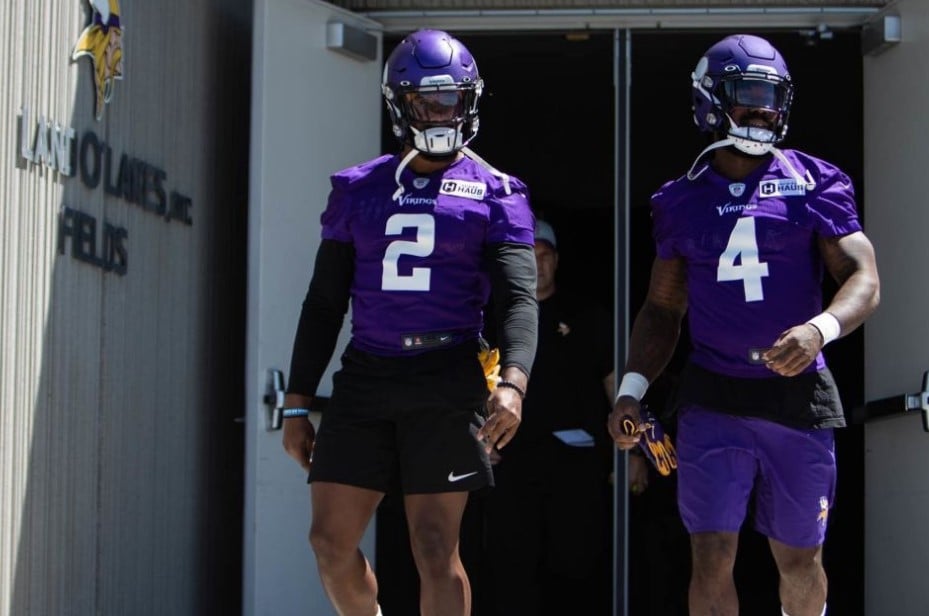The Vikings Need to Get Rid of Dalvin Cook

When the Vikings selected Dalvin Cook in the second round of the 2017 draft, their first draft pick that year, it was a surprise, as the team already had two runners in the building. Latavius Murray was a recent free-agent signing and was considered a solid starting-caliber player. The second one was Jerick McKinnon, who was stuck behind star running back Adrian Peterson, but when given a chance, he played pretty well.
However, Rick Spielman, the general manager at the time, picked Cook to continue the era of dominant running backs in Minnesota. The team had Peterson under contract for almost a decade, one of the elite running backs of his generation. Six seasons have passed since the Cook selection, and it might be time to part ways.
The Vikings Need to Get Rid of Dalvin Cook

Cook has mostly been a fantastic player for the Vikings. He missed all but four games in his rookie campaign because of a torn ACL and struggled after his initial return to the field in 2018, which was a big reason for the overall struggles of the 2018 Vikings offense.
In 2019, Cook looked like the explosive back the Vikings drafted, and he had two elite years before an ankle injury slowed him down in 2021. One year later, in 2022, he didn’t look like his prime self and surely appeared to have lost a step.
According to advanced metrics, Cook was one of the least effective runners in football. In Rushing Yards over Expected or RYOE, the veteran ranked near the bottom of the league after actually gaining fewer yards per attempt than expected. Folks could claim that the numbers are flawed, but the trend is obvious.
- 2022 = -0.16
- 2021 = 0.34
- 2020 = 0.81
- 2019 = 0.44
- 2018 =0.24
The trend is obvious, and the numbers match the eye test. Cook will count $14,101,272 against the salary cap in 2023, the sixth-most in the league among running backs. Restructuring the deal wouldn’t make much sense, as it would push the cap hit into the future, when he’ll most likely lose another step.

Releasing the runner would leave the Vikings with roughly a $6.2 million dead cap hit in 2023 but save the team almost $7.9 million. Cutting Cook with a post-June-first designation would save $11 million in 2023, but the team had to find other ways to save the necessary cap space before the new league year arrives in March.
Cook’s decline and an NFL trend are the two reasons why a departure would make sense from a Vikings’ standpoint.
Highly paid running backs simply don’t win Super Bowls. The list of the leading players in rushing yards of Super Bowl champions in the last few years is astonishing: Isiah Pacheco, Cam Akers, Leonard Fournette, Damien Williams, Sony Michel, LeGarrette Blount – three times, and C.J. Anderson. In 2014, the Seahawks won the Super Bowl over the Broncos in true blowout fashion. However, former Viking Percy Harvin and not Marshawn Lynch led the team in rushing yards in the big game.
The list reads like a random free-agent list. Most of the teams employed multiple rushers, but none of the players should be considered a great back. Even one of the bigger names, Fournette, was cut by the Jaguars right before the Buccaneers picked him up.
Some of the organizations even invested high draft capital in running backs, but in the end, the replacement-level guys led the backfield. Of all the players on that list, the highest base salary in the Super Bowl year belonged to Harvin, with only $2.5 million.

The Vikings should copy that approach. One potential free agent target could be former Cleveland Brown D’Ernest Johnson. He could be available for the veteran minimum or close to that, and paired with 2022 rookie Ty Chandler, or a mid-to-late round 2023 rookie, the Vikings can build a cheap Super Bowl-caliber running back tandem. Players like that can be effective in the right system.
Today’s NFL features high-profile passing offenses. Some teams are still built around halfbacks, but the success is not very high. Derrick Henry, Ezekiel Elliott, Christian McCaffrey, Alvin Kamara, Austin Ekeler, Dalvin Cook, and Jonathan Taylor, arguably the top backs of this generation, have combined fewer Super Bowl appearances than Damien Williams. The only fairly prominent name in recent years to reach the Super Bowl was Joe Mixon with the Bengals.

Of course, having a great running back is better than having an average one. For the same price, teams would be foolish to prefer the worse player. The problem is the high cost and building the team around the running game. Rushing the football is still important in 2022, but the resources are better spent on the offensive line, which also helps the running game. Teams that actually have a big-time runner on the team try to feed the back, but passing the ball is statistically the better way to go.
The 2022 Vikings had the fourth-highest passing rate in the league. Employing a highly-paid running back doesn’t fit what the team wants to do on the offensive side of the ball.
Janik Eckardt is a football fan who likes numbers and stats. The Vikings became his favorite team despite their quarterback at the time, Christian Ponder. He is a walking soccer encyclopedia, loves watching sitcoms, and Classic rock is his music genre of choice. Follow him on Twitter if you like the Vikings: @JanikEckardt

You must be logged in to post a comment.